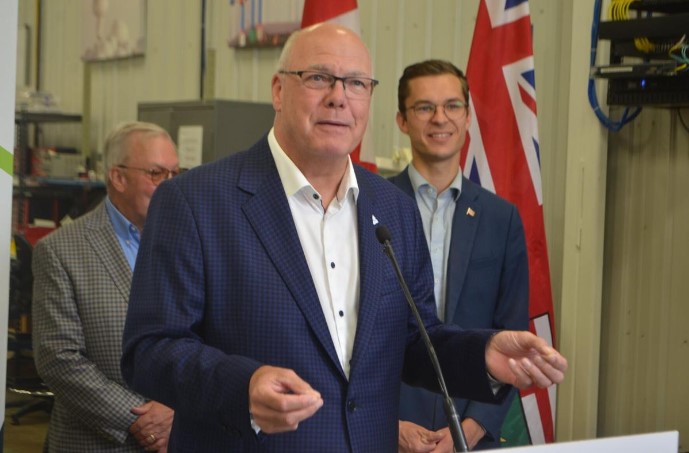Source: The Standard
Vineland Research and Innovation Centre is set to grow about 10 per cent this year.
It will be assisted by a $23.55-million investment from the federal and provincial governments that will fund research and maintain its infrastructure on Victoria Avenue.
During a Thursday announcement in Vineland, Ontario Agriculture, Food and Agribusiness Minister Rob Flack said the province’s agri-food sector produces $50 billion in gross domestic product, more than the auto industry, while also supporting more than 800,000 jobs.
“This is an important and growing industry,” said Flack, MPP from Elgin-Middlesex-London, who was appointed agricultural minister in June.
“(Vineland) is converting applied research, important research, to the commercialization and delivery of solutions that will help farmers, processors and, ultimately, consumers. This is what it is all about.”
St. Catharines Liberal MP Chris Bittle said the funding is a “significant investment” that “builds on our government’s long legacy of support for this world-class research.”
“Vineland plays a key role not only in Niagara, but across the country,” said Bittle. “Cutting-edge research takes place here.”
The federal government is providing $14.13 million, or 60 per cent of the funding, while the provincial government is contributing $9.42 million.
Ian Potter, Vineland Research and Innovation Centre’s president and chief executive officer, said the funding will “continue to meet historical levels of investment” for the facility.
He said other agencies have seen a reduction in funding, but Vineland’s has experienced a “slight increase” in government investment, which is already translating into critical economic impact within the agricultural sector.
Bittle mentioned one of many success stories from Vineland, the so-called Happi pear. In 2013, Vineland Research and Innovation Centre inherited the breeding program of the pear and investigated opportunities for commercialization.
“I’m looking forward to trying it,” said Bittle. “It’s certain to be a hit with consumers and growers alike.”
Happi pear’s ancestor is the Bartlett pear, which has a narrow window of eating quality. It is firm, sweet, juicy with a sun-kissed rosy, yellow green skin, popular with both consumers and growers. Potter said Vineland is working with its partners to move the pear to markets outside North America.
“Vineland is driven not by ivory tower academia,” said Niagara West MPP Sam Oosterhoff. “It’s been driven by what the growers want, what the consumers want. They are translating (the funding) into practical solutions that will drive more agri-food technologies.”
The funding, which is from the Sustainable Canadian Agricultural Partnership in horticultural research, innovation and commercialization activities, is being provided over a five-year term. Potter said some of the funding has already flowed to the facility.
The research centre has been focusing its research in five areas, including automation, biological crop protection, plant responses and the environment and consumer, sensory and market insights. The goals of the facility and the province are to get 250 patents and licences through research, develop technology to advance new agri-food innovations and grow the market for Ontario innovative technologies by 2030.
Oosterhoff said the investment builds upon the Sustainable Canadian Agricultural Partnership program, signed by Ontario and the federal government in 2022 at Vineland Research and Innovative Centre, to provide a wide range of investments to boost the agri-food sector. The agreement at the time allowed $1.77 billion in support for the agri-food sector and research and innovation, an increase from $1.2 billion.
The Sustainable CAP, started in 2023 and lasting until 2028, is a $3.5-billion investment by federal, provincial and territorial governments.

